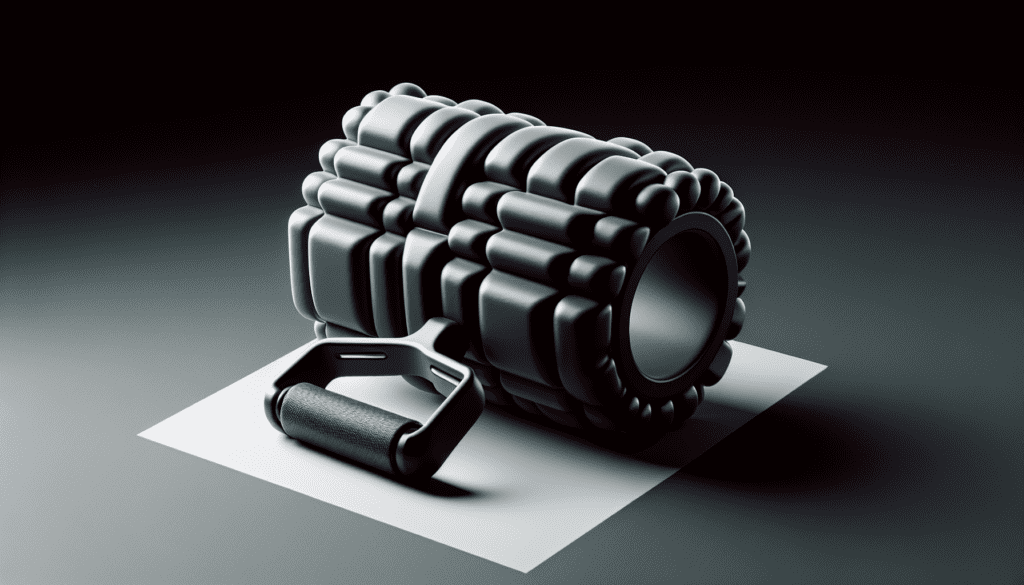In the fast-paced and physically-demanding world of mixed martial arts (MMA), preventing injuries is of utmost importance. To excel in this intense combat sport, it is crucial to understand the role of soft tissue maintenance. By taking care of your body’s soft tissues, including muscles, tendons, and ligaments, you can significantly reduce the risk of injury and enhance performance. This article sheds light on the importance of soft tissue maintenance in MMA, providing valuable insights and practical tips to keep you in top form. With a comprehensive understanding and proper care, you can unleash your full potential in the ring and stay injury-free.
Understanding Soft Tissue Maintenance
Soft tissue refers to the muscles, tendons, ligaments, and fascia in our body. While these structures are resilient, they are not immune to injury. In the context of Mixed Martial Arts (MMA), where intense physical exertion and combat are involved, soft tissue maintenance becomes essential for preventing injuries, improving performance, and promoting overall well-being. By understanding the importance of soft tissue maintenance, the types of maintenance techniques available, and how to incorporate them into your training routine, you can enhance your MMA journey and stay in top form.
What is Soft Tissue?
Soft tissue encompasses a wide range of biological structures in our bodies that provide support, stability, and movement. Muscles are responsible for generating force and facilitating movement, while tendons connect muscles to bones, allowing them to transmit this force. Ligaments, on the other hand, connect bone to bone, providing stability within joints. Fascia, a network of connective tissue, surrounds and separates various components of our musculoskeletal system. These soft tissues work synergistically to enable our bodies to function optimally.
Importance of Soft Tissue Maintenance in MMA
Soft tissue maintenance is of utmost importance in MMA due to the physical demands placed on the body during training and competition. Without proper maintenance, injuries can occur, hindering performance and impeding progress. By incorporating soft tissue maintenance into your training routine, you can minimize the risk of injury, improve your performance, enhance flexibility, and ensure adequate muscle recovery.
Common Soft Tissue Injuries in MMA
MMA athletes are prone to certain types of soft tissue injuries due to the nature of the sport. These injuries can range from minor strains and sprains to more serious tears and ruptures. Common soft tissue injuries in MMA include muscle strains, ligament sprains, tendonitis, and fascial injuries. Understanding these potential injuries will help you take preventive measures and seek appropriate treatment if required.
Types of Soft Tissue Maintenance
There are several techniques and practices that can be employed for soft tissue maintenance in MMA. Incorporating a combination of these techniques into your training routine can help keep your soft tissues healthy and injury-free. The following are some commonly used methods:
Stretching and Flexibility Exercises
Stretching is crucial for maintaining an optimal range of motion in your joints and preventing muscle imbalances. Including a dynamic warm-up routine that involves active stretching before workouts and static stretching after workouts can help keep your soft tissues flexible and primed for MMA movements.
Foam Rolling and Self-Myofascial Release
Foam rolling is an effective technique for self-myofascial release, which involves applying pressure to specific areas of the body to relieve tension and improve mobility. By using a foam roller, you can target tight muscles, knots, and trigger points, promoting better blood flow and tissue health.
Massage Therapy
Massage therapy is a widely recognized method for soft tissue maintenance. Regular sessions with a qualified massage therapist can help reduce muscle soreness, improve circulation, break up scar tissue, and enhance overall recovery.
Joint Mobilization Techniques
Joint mobilization techniques involve gentle movements of the joints to increase their range of motion and reduce stiffness. These techniques can be performed using various methods, such as manual therapy, passive stretching, and specific exercises. Joint mobilization can be beneficial for preventing soft tissue injuries and maintaining joint health.

Benefits of Soft Tissue Maintenance
Soft tissue maintenance offers numerous benefits for MMA athletes, both in terms of injury prevention and performance enhancement. By incorporating these practices into your training routine, you can experience the following advantages:
Reduced Risk of Injury
Proper soft tissue maintenance helps identify and address potential issues before they become major problems. By keeping your muscles, tendons, ligaments, and fascia in optimal condition, you minimize the risk of overuse injuries, strains, and sprains.
Improved Performance and Recovery
Maintaining healthy soft tissues allows for optimal muscle function, resulting in improved strength, power, and endurance. Additionally, by promoting efficient recovery and reducing muscle soreness, you can train harder and more frequently, leading to faster progress and improved performance.
Enhanced Flexibility and Range of Motion
Soft tissues that are regularly stretched and maintained have greater flexibility and range of motion. This is crucial in MMA, where movements often require a significant degree of mobility and agility. Enhanced flexibility allows you to execute techniques more efficiently and reduces the risk of muscle imbalances and limitations in movement.
Increased Blood Circulation and Nutrient Delivery to Muscles
Soft tissue maintenance practices such as massage therapy, foam rolling, and joint mobilization improve blood circulation to the muscles. This increased blood flow promotes better nutrient delivery and removal of waste products, aiding in muscle recovery and preventing the buildup of metabolic byproducts that can hinder performance and cause fatigue.
Proper Technique and Form
While soft tissue maintenance is crucial for preventing injuries, it is equally important to focus on proper technique and form to avoid unnecessary strain on your muscles, tendons, ligaments, and fascia. By understanding the importance of correct technique and avoiding common mistakes, you can significantly reduce the risk of soft tissue injuries.
Importance of Proper Technique in Preventing Soft Tissue Injuries
Executing MMA techniques with proper form and technique ensures optimal muscle activation and joint alignment. Incorrect technique can result in excessive stress on certain muscles or joints, leading to overuse injuries or acute trauma. By practicing and perfecting your technique under the guidance of a qualified coach or instructor, you can reduce the risk of soft tissue injuries and maximize your performance potential.
Common Mistakes and Their Consequences
Certain common mistakes in MMA training and technique can have detrimental effects on your soft tissues. Some of these mistakes include improper weightlifting form, inadequate warm-up and cool-down routines, neglecting flexibility training, and overtraining without sufficient rest and recovery. These mistakes can lead to chronic muscle imbalances, strains, sprains, and other soft tissue injuries.
Training under the Guidance of a Qualified Coach or Instructor
To ensure proper technique and form in your MMA training, it is essential to seek guidance from a qualified coach or instructor. Working with an experienced professional will help you learn the correct body mechanics, avoid common mistakes, and address any imbalances or limitations that may increase the risk of soft tissue injuries.

Warm-up and Cool-down
To prepare your body for the physical demands of MMA training and minimize the risk of soft tissue injuries, incorporating a thorough warm-up and cool-down routine is crucial.
Importance of a Thorough Warm-up Routine
A comprehensive warm-up routine raises your body’s core temperature, increases blood flow to the muscles, and prepares your joints for the upcoming activity. By gradually increasing the intensity and range of motion, you can enhance joint lubrication and improve muscle elasticity, reducing the risk of strains and other soft tissue injuries.
Dynamic Stretching Exercises for Warm-up
Dynamic stretching exercises, such as leg swings, arm circles, and walking lunges, should be included in your warm-up routine. These exercises involve controlled movements through a full range of motion and help activate the muscles and increase their flexibility, preparing them for the demands of MMA training.
Cool-down Techniques to Aid in Recovery and Prevent Injury
After intense training sessions or competitions, cooling down is essential for promoting recovery and preventing soft tissue injuries. Incorporate light aerobic exercises, such as jogging or cycling, to gradually reduce your heart rate and allow your muscles to relax. Follow this up with static stretching exercises to release tension and improve flexibility.
Nutrition and Hydration
Proper nutrition and hydration play a significant role in soft tissue maintenance and overall performance in MMA.
The Role of Nutrition in Soft Tissue Maintenance
A well-balanced diet, rich in lean proteins, fruits, vegetables, and whole grains, provides the necessary nutrients for soft tissue repair and growth. Protein is particularly important for muscle recovery, while vitamins and minerals support overall tissue health and function. A nutrition plan tailored to your specific needs and goals can optimize your soft tissue maintenance and promote optimal performance.
Importance of Staying Hydrated for Optimal Soft Tissue Health
Hydration is crucial for maintaining soft tissue health as water is essential for optimal tissue function and lubrication. Dehydration can lead to muscle cramps, stiffness, and increased risk of soft tissue injuries. Make sure to drink an adequate amount of water throughout the day and replenish fluids lost during training sessions to support optimal soft tissue hydration.
Rest and Recovery
While training hard is important for progress in MMA, sufficient rest and recovery periods are equally vital for soft tissue maintenance and injury prevention.
Understanding the Importance of Rest for Soft Tissue Repair and Growth
Rest is essential for soft tissue repair and growth. During intense training sessions, micro-tears occur in the muscles, tendons, and ligaments. Adequate rest allows these structures to heal and rebuild, making them stronger and more resilient. Failing to include rest periods in your training routine can lead to overuse injuries and hinder progress.
Different Recovery Methods for Soft Tissue Maintenance
There are various recovery methods available to aid in soft tissue maintenance, including active recovery, passive recovery, and modalities such as ice baths and contrast therapy. Active recovery involves engaging in low-intensity activities, such as light swimming or cycling, to promote blood flow, flush out metabolic waste, and hasten soft tissue repair. Passive recovery, on the other hand, involves rest and avoiding strenuous activities to facilitate tissue healing and adaptation.
The Role of Sleep in Soft Tissue Recovery
Quality sleep is crucial for soft tissue recovery and overall health. During sleep, the body significantly increases the production of growth hormone, which plays a vital role in tissue repair and growth. Aim for at least 7-9 hours of uninterrupted sleep each night to ensure optimal soft tissue recovery and maximize your MMA performance.
Injury Management
Despite taking preventive measures, soft tissue injuries can still occur in MMA. Recognizing and addressing these injuries early can greatly minimize their impact and facilitate a smoother recovery.
Recognizing and Addressing Soft Tissue Injuries Early
MMA athletes should be vigilant in recognizing early signs of soft tissue injuries, such as pain, swelling, limited range of motion, or a decrease in performance. Ignoring these warning signs or continuing to train through pain can exacerbate the injury and lead to more severe complications. It is essential to address any discomfort promptly through appropriate rest, icing, compression, and elevation.
The RICE Method for Acute Soft Tissue Injuries
For acute soft tissue injuries, the RICE method is commonly recommended. RICE stands for rest, ice, compression, and elevation. Rest the injured area, apply ice to reduce inflammation, use compression to limit swelling, and elevate the injured limb to minimize swelling and aid in fluid drainage. Following the RICE method in the early stages of injury can help accelerate the healing process.
Seeking Professional Medical Help for Severe or Chronic Injuries
In the case of severe or chronic soft tissue injuries, seeking professional medical help is crucial. A medical professional can accurately diagnose the injury and provide appropriate treatment options, such as physical therapy, ultrasound therapy, or in some cases, surgery. It is essential not to ignore persistent pain or recurrent injuries, as they could be indicative of underlying issues that require professional intervention.
Preventing Overtraining
Overtraining can have a detrimental impact on soft tissue health and training progress. To avoid the risks associated with overtraining, it is essential to implement proper training volume, intensity, and recovery strategies.
Understanding the Risks of Overtraining on Soft Tissue
Overtraining places excessive stress on your soft tissues, leading to a higher risk of injury. Continuous high-intensity training without adequate rest and recovery impairs tissue repair mechanisms, lowers immune function, and increases the likelihood of overuse injuries, such as tendonitis and stress fractures. By recognizing the signs of overtraining and implementing appropriate modifications, you can protect your soft tissues from unnecessary strain.
Implementing Proper Training Volume and Intensity
Finding the right balance of training volume and intensity is crucial for soft tissue maintenance. Gradually increase the workload, allowing your body to adapt and recover between sessions. Implementing periodization techniques, which involve planned variations in training volume and intensity, can help promote optimal soft tissue health and performance gains while reducing the risk of overuse injuries.
Allowing Sufficient Rest and Recovery Periods
Rest and recovery periods should be integrated into your training schedule to give your soft tissues time to repair and adapt. Taking regular rest days, incorporating active recovery exercises, and structuring deload phases where training volume and intensity decrease can prevent overtraining and promote optimal soft tissue maintenance.
Individualized Training Programs
Every MMA athlete has unique needs, strengths, and limitations. Therefore, adopting an individualized training program is essential for optimizing soft tissue maintenance and overall performance.
Importance of Personalized Training Plans
By working with a qualified strength and conditioning specialist or coach, you can develop a training plan that addresses your specific goals and caters to your physical abilities. A personalized training program takes into account your current fitness level, any existing injuries or limitations, and allows for progressive adaptation over time.
Tailoring Exercises and Techniques to Individual Needs and Limitations
Not all exercises and techniques are suitable or beneficial for every athlete. A personalized training plan will identify exercises and techniques that work best for you while considering your body’s unique biomechanics, strengths, weaknesses, and limitations. Adapting and modifying exercises based on individual needs is crucial for effective soft tissue maintenance and injury prevention.
Working with a Qualified Strength and Conditioning Specialist
To ensure the success of your individualized training program, seek guidance from a qualified strength and conditioning specialist. These professionals have the expertise and knowledge to design programs that optimize soft tissue health, prevent injuries, and enhance performance. They can also monitor your progress, make necessary adjustments, and provide guidance on additional soft tissue maintenance techniques suited to your needs.
In conclusion, soft tissue maintenance is a vital aspect of MMA training for injury prevention, performance enhancement, and overall well-being. By understanding the significance of soft tissue maintenance, implementing appropriate techniques and practices, and following proper training guidelines, you can maximize the benefits of MMA training while minimizing the risk of soft tissue injuries. Remember to prioritize rest, recovery, and individualized training programs to keep your soft tissues healthy, resilient, and ready for the challenges of MMA.

